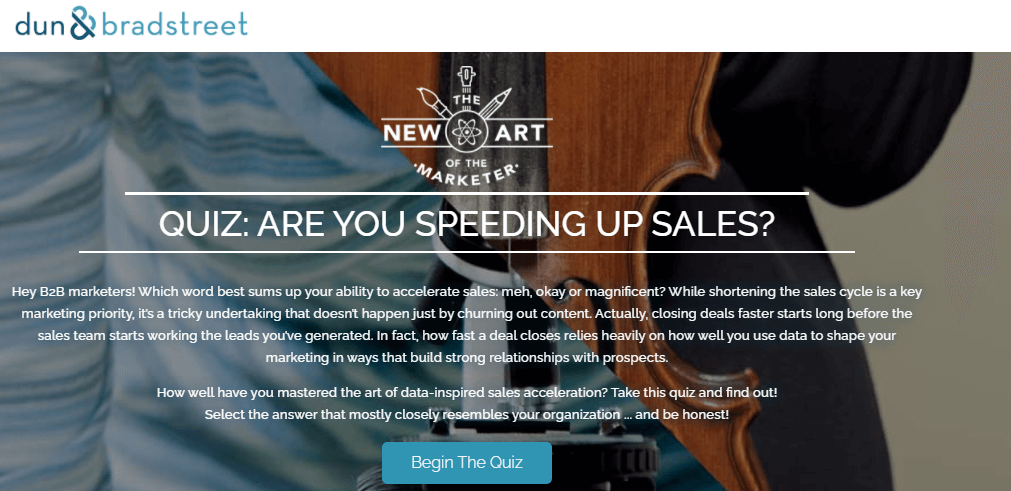The efficiency of Digital Marketing strategies in different industries has considerably increased the struggle for space on the Internet.
Always seeking to optimize the consumers’ experience, bringing them closer to the brand, marketers have to invest in accurate techniques to overcome the competition.
To monitor, evaluate, and optimize any strategy, it’s essential to track some metrics, such as visitors’ time on page.
After all, if users spend little time browsing your content, the chances of conversion are lower. In a situation like this, what to do? The answer comes in two words: interactive content.
Don’t you know why? In this article, we’ll go deeper into how you can use interactive content to increase your visitor’s time on page. We’re going to answer:
- Why should you keep an eye on your visitor’s time on page?
- What affects the visitor’s time on page?
- How to use interactive content to increase your visitor’s time on page?
- What are the best types of interactive content for this purpose?
- Wrap Up
Why should you keep an eye on your visitor’s time on page?
There are many metrics you can follow to evaluate your Digital Marketing strategy. The most important ones depend directly on your objectives, as well as on the users’ characteristics and the general scenario of the market.
Therefore, all planning activities related to Digital Marketing should include a selection of Key Performance Indicators (KPIs). They are nothing more than the metrics considered most relevant for further reporting and analysis.
That said, companies that have websites as an important part of their business choose to give special attention to visitor’s time on page.
But why do they do this? Is the time spent on the page more important, for example, than the number of unique visits or top exit pages?
Not at all. All these indicators have their relevance in different matters, and should never be underestimated.
After all, it’s not enough to look at just a portion of your business if understanding it as a whole is a basic requirement for success.
However, tracking visitors’ time on page brings insights that cannot be produced by other metrics.
In Google Analytics, this metric is defined as the average amount of time visitors spend on a page or screen and on a set of pages or screens.
This means that this metric enables you to identify the pages that seem most attractive to visitors and those that are not quite successful in retaining their attention.
From this, you can develop strategies to explore the website’s parts with the highest user’s time on page rates. Likewise, you can take steps to improve those with poor performance.
If your user’s time on page is too low, this may indicate some problems. In the next topic, we’ll talk about this and present interactive content as a potential solution.
What affects the visitor’s time on page?
Is your analytics tool indicating that your visitors are spending too little time on your pages? So, the first thing you should ask yourself is: why is this happening? Sometimes you can find the answer quite easily.
A page with slow loading time, a visually unpleasant design, and buttons with broken links are common causes. At other times, the problem is a bit more complex. To understand this, think about the bounce rate.
The bounce rate is the metric that estimates the number of visitors that left your site without interacting with the page.
Those visits are extremely common, especially when we are talking about blog posts containing specific information.
If you have a good SEO strategy, users find your content through SERPs (search engine results page). So, they read, have their questions answered and, satisfied, hit the back button.
Even if the user is satisfied with the experience, Google Analytics will register their time on page as zero. Why?
Because the system calculates this metric based on two clicks: the one that takes the user to the page and the one that takes them out of it, to another sector of the web.
If reading the post is the only thing they do on the website, Google doesn’t register the exit click, and the performance of the page is affected.
It’s a paradoxical situation since the content quality itself, which provides all the information to the buyer persona, makes them leave without performing another action.
Interactive content can change this radically. It’s developed to motivate consumer engagement through clicks, comments, participation in quizzes, and so on.
Because it’s a ludic, different, and interactive experience, the user tends to get more involved with it.
The clicks they give to perform different interactions are recorded by Analytics and increase the average time on page.
How to use interactive content to increase your visitor’s time on page?
1. Focus on quality
It’s always good to remember: quality is worth much more than quantity. So, before you start producing interactive content, make sure the materials will deliver value for users.
That’s why it’s necessary to focus on relevant subjects and ensure the originality of the material.
Furthermore, you must align the content to the lead’s progress in the marketing funnel. For each step, there’s a more appropriate type of content.
To ensure the overall quality of production, it’s good to consider investing in services and tools that can be useful in the process.
Some platforms offer simplified production of various content formats and also connect your company with specialized professionals.

2. Embed interactive content
Don’t be frustrated when noticing that some of your pages don’t seem to attract so much public’s attention, even if you consider them to be relevant.
Often, the mere addition of interactivity can shift this scenario and lead readers to engage with the content.
A classic example is the landing page, which many say is dead, but it was reinvented. If you use a traditional landing page and don’t get great results, the problem may be that it’s static.
Thus, add interactive elements to your landing pages to make them more attractive to the user. This not only increases the average time on page but also enhances lead generation and the conversion rate.
3. Use various formats
As you will see further in this post, there are several interactive content formats. It’s up to you to identify the one that best fits your buyer persona and the funnel stage you want to impact.
Even if you have a favorite, it’s essential to diversify the formats. The reason for this is simple: consumers like diverse experiences and may get bored by repetitive content.
So, stay tuned on the types of content we will present in the next topic and deepen your knowledge about them.
What are the best types of interactive content for this purpose?
#1: Interactive calculator
Interactive calculators are widely used in the most advanced phases of the funnel. There, the goal is to demonstrate to leads the benefits that the company’s solution offers.
In the case of a service provider, for example, the calculator can indicate how much the customer will save if they close the deal.
Resources like this on your website also attract more visitors interested in using the tool. During the visit, they interact and, as a result, stay longer on the page.
Check out the following example:
#2: Interactive quizzes
Quizzes are excellent resources for you to educate the buyer persona and, at the same time, learn more about them.
As it has elements that resemble games, this format is extremely attractive for users, who see it as a unique and personalized experience.
That’s how the Dun & Bradstreet quiz idea was born. The content offers questions to determine B2B marketers’ success in sales acceleration.
In the end, the visitor receives their personalized result and accesses appropriate tips.

#3: Interactive infographics
Infographics are excellent resources for conveying more complex information. By mixing text and visual resources, infographics capture the users’ attention and facilitate their understanding.
Besides, you can configure certain parts of the content to be accessible only through some type of interaction, ensuring higher engagement.
This infographic from Symantec is the perfect example. Notice that it uses images and other elements to pass information. Another interesting point is that certain parts of the material are only disclosed when you lower the scroll bar.
Wrap Up
Using interactive content to increase your visitor’s time on page is also a way to achieve other benefits. Your website, for example, will build greater authority thanks to the increase in its performance indicators. More than that, your leads will enjoy more complete experiences.
Success in using interactivity depends on how well you know it. How about learning more? Download our guide on interactive content and take your strategy to the next level!
Start creating interactive content with Ion and increase your marketing results!
Start creating interactive content with Ion and increase your marketing results!








